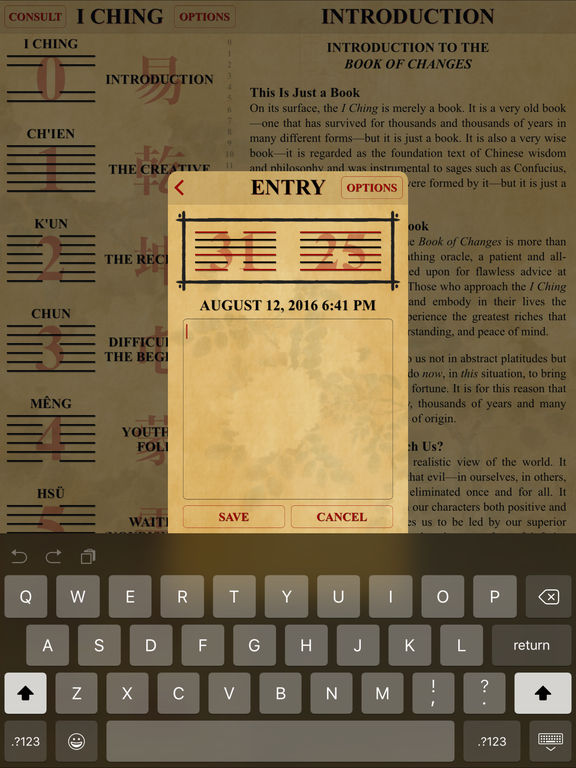


In I Ching, the word 'Heaven'(or sky it corresponds to the Chinese character '天') is considered as same as God or the absolute being with humane character, who decides the good and evil and makes judgements. To make process simpler, some people use coin to know the result. Using those sticks with certain order, the person who wants to know the result draws hexagram and finds the explanation in the book. The typical divination using I Ching needs the number of fifty thin sticks usually made from bamboo. There comes next hexagram after explanations of all lines of one hexagram. In I Ching, the name of one hexagram and the hexagram itself comes first, and after those, there are different explanations for the hexagram and the each line consisting hexagram, from bottom to top. There exists one different name for one hexagram. From the bottom to top, six lines are gathered in parallel. The broken line (the line where the middle part is missing) represents yang, and the unbroken line represents yin. Hexagram is a group of six broken or unbroken lines. The contents of I Ching consist of 64 hexagrams and explanation for each. It was advanced form of Shang Dynasty's divination, and finally, it took place instead of Shang's divination. In early age of Zhou Dynasty, a new way of divination appeared which was put into writing. Zhou Dynasty made Shang cease to exist, but it accepted Shang's culture. During Shang Dynasty, divination was done by burning animal's bone or tortoise shell. We cannot say which one was first, but it is supposed that characters were made from certain need while doing divination. Shang Dynasty's main cultural characteristics are its divination and character (old Chinese character). Before Zhou Dynasty, there was Shang Dynasty (1600 BC - 1046 BC). The text was mainly written during the early Zhou Dynasty (1046 BC-771 BC).


 0 kommentar(er)
0 kommentar(er)
